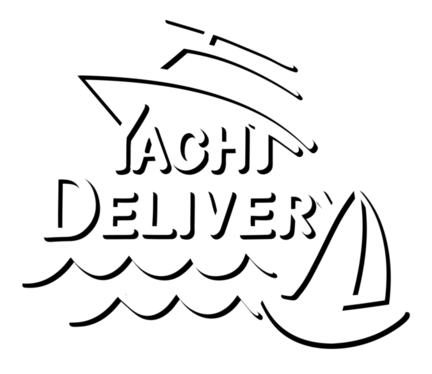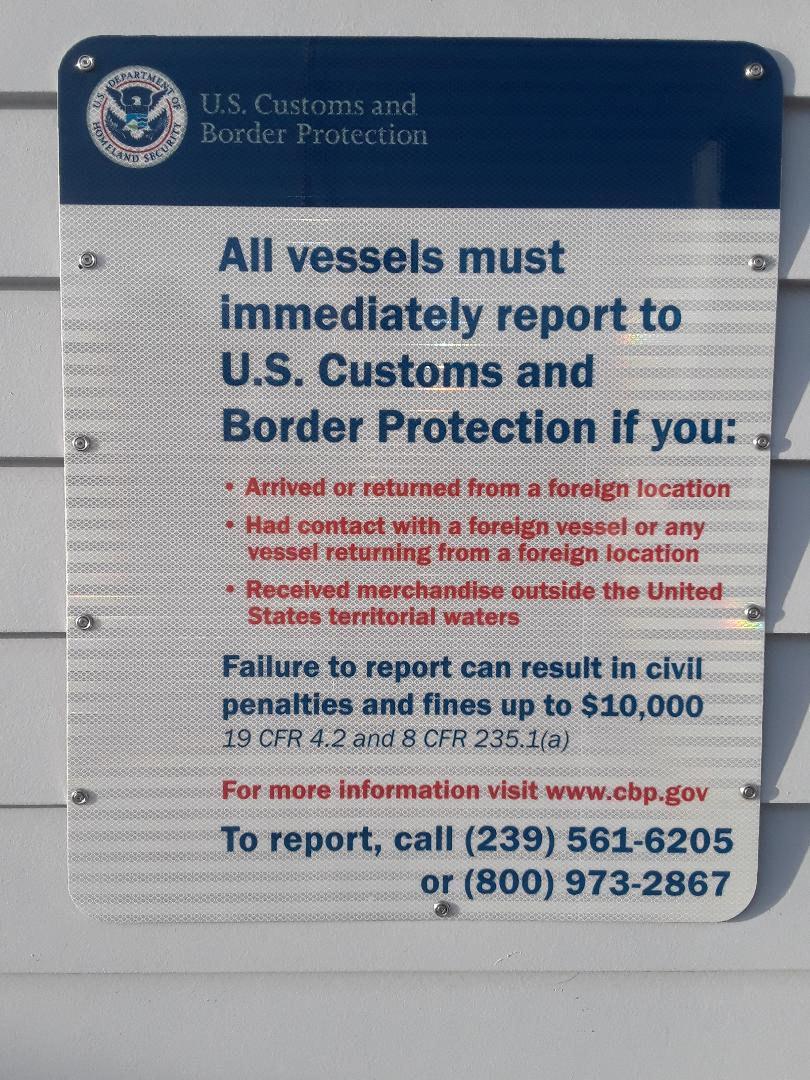Captain James Lowe
USCG 200 Ton Licensed Master
(727) 236-1385

Frequently Asked Questions
James Lowe's Captain Services base of operations is Central Florida.
Near Orlando was chosen for its central location as well as the availability of airports, car rentals and train stations.
1a.How do I book a delivery?
To schedule a delivery please first use our Contact Form.
(Contact infomation is required for charting distances, stops, calculating transit times)
Then Call (727) 236-1385
1b. What happens to information submitted to contact form?
With the assistance of software, the information gathered from the contact form is automatically used to populate your client details, estimates, statements, and boat logs. Therefore, it's essential to ensure that your information is accurate. Your information is needed in order to provide you with an accurate estimate; rest assured, it is kept private and only used for this purpose. Your Information is not sold or shared!
A deposit will be required to get on the schedule. If you did not pay a deposit, You are not yet on the schedule.
The deposit serves to secure the requested delivery time frame, ensuring that we allocate our resources exclusively to your project during that period and do not accept other commitments.
1c. What if "weather happens" right when my block of time comes up?
We have observed that inclement weather typically resolves within a few days, and we incorporate built-in time off buffers between projects to account for such delay situations.2.What is the difference between a quotation and an estimate?
While we can QUOTE you a daily rate for crew. We can only ESTIMATE the total number of days to complete a voyage from to the (boat speed) infomation given to us by you.
3.Where will you deliver?
I will deliver your boat to marinas and private docks along the U.S. East and Gulf Coasts, Inland Rivers, Intracoastal Waterways, Great Lakes, Florida, the Bahamas, the Caribbean and other ports.
4. Does the vessel need to have insurance?
Yes, And check to verify that the existing insurance covers a licensed Master Captain.
5. Does the vessel need documentation?
Yes, documentation and/or state registration should be aboard, along with a letter appointing Captain James Lowe as the owner's agent (provided in the signed contract).
6. Does the vessel need covered by a towing policy?
Yes, it's a good idea to have an existingSea Tow or BoatU.S. membership.Note: While your insurance policy may cover towing, it is important to note that towing is considered an incident, and making claims for towing services can negatively impact your insurance rates. Getting service through the claims department of your insurance company is more complex than directly calling the membership number on the provided towing service cards.
7. What type of boats do you deliver?
For long distances only sailboats over 27 feet, power boats over 30 feet and any larger type and size of powerboat or sailboat. Private and commercial up to 200 gross tons.
*NOTE: Vessels smaller than the minimum stated can be moved locally. Lessons are also given on smaller vessels. If you need to move a vessel long distance and its smaller than 30 feet, you should consider trucking it. I may make some exceptions for smaller vessels in excellent condition crossing between Florida and the Bahamas where trucking isn't an option.
8. Can the owner come with us?
Yes, owners are more than welcome to join us on the boat relocation along with their family. However, it is essential to ensure that the vessel has sufficient berthing accommodations to accommodate everyone comfortably. If the owner wishes to join us as an observer or for training purposes, we welcome their participation. It can be a valuable opportunity for the owner to learn more about the operation of their vessel and gain hands-on experience. We are happy to accommodate their preferences and provide any necessary guidance or Hands-On-Training. during the journey. Our goal is to ensure that the owner has a positive and fulfilling experience while onboard.
9a. How many crew for a delivery?
Minimum 1 captain, 1 deckhand depending on the size of the vessel.
Passengers - owner provided deckhands
9b. Can the owner provide their own deckhand?
NO, Our deckhands are trained professionals and employees of Captain James Lowe. Past experiences with friends, relatives, or owner's as deckhands have posed challenges and inadequate training.
No exceptions are made in this regard. Owners can have someone as a passenger, but crew members are exclusively hired and trained by the captain.
Friends and family should not be invited as "crew" for yacht deliveries, as deliveries involve demanding work, not vacations. Inexperienced, untrained, and unprepared crew pose safety risks to the vessel and everyone on board.
The captain's time is occupied with vessel responsibilities, making it impractical to explain everything to those unfamiliar with the vessel operations, and managing such crew members adds to the captains workload and risks damage to the vessel and safety of all souls onboard.
10. What condition should the vessel be in?
As well maintained as possible. The engines needs to be in good running order and recently serviced with a few spare parts. at a minimum extra fuel filters and engine oil and some basic tools shoud be onboard.
11. Electronics
The Vessel should be equipped with a working Depth Sounder, GPS/ Chartplotter and a working VHF Radio. All the navigation equipment, lights and radios should be in good repair.
*NOTE: I carry a back up GPS / Chartplotter and Handheld VHF Radio.
12. What do you need on board?
All USCG required safety equipment. 2010 REQUIREMENT CHART
Vessel must have all required safety gear, fire extinguishers and life rafts. Any safety gear that has an expiration date should be checked to ensure they are still valid. All must be in good condition. Paper and or electronic charts for the areas to be sailed should also be available.
13. How do i know how much fuel I need?
In your quote, we will provide the estimated engine hours at a given speed. To calculate the fuel consumption, you can multiply the engine hours by the gallons per hour (GPH) rate obtained from your Fuel Consumption Test This will give you an estimate of the fuel required for the specified duration of the voyage.
Owners of powerboats should be aware and have realistic expectations of fuel cost during a relocation. Even at a slow speeds, you will likely spend more on fuel for the boat than you spend paying the crew delivering the vessel. Be aware that running your boat at a higher RPM will use more fuel, while a slower RPM will require the crew to be on the yacht longer.
Bicycle going faster than us
14. How many hours a day do you sail?
We typically start our travel at the crack of dawn and aim to have at least 10-12 hours of travel each day. We prefer to utilize daylight hours for safety reasons, but we are not strictly limited to them. Even when we stop running for the day, the day is not over for us. We still take care of daily maintenance tasks such as fluid checks and fueling, ensuring the boat is in good condition.
15. What route will you use?
The Captain James Lowe reserves the right to alter course and route at any time for the purpose of safety based on weather, vessel congestion, tides currents or any other concerns. We endeavor to make the shortest and safest passages possible.
16. Weather delays?
Should we encounter severe weather, in SOME cases an alternate route is available. In some crossing situations it may be necessary to hold up in a port of refuge. In the event that may occur, we charge a discounted daily rate.
17. Mechanical Delays?
Mechanical concerns are treated on a case by case basis. We will attempt to fix on the spot if possible.
18. Sail or motor? (Sailboats only)
We will always sail where possible. However, we are not sailing purest, so you can be sure we are also running the engine to get the necessary speed on the course we desire.
19. Extra Cost?
All expenses above the crew daily rate incurred by the boat such as fuel, marina fees, repairs, crew travel, tips for marina dockhands and onboard provisions etc... will be charged to the vessel owner.
20. U.S. Customs and Border Protection's (CBP)
Do private yachts have to go through U.S. Customs returning to our shores? Simple answer is YES!, I am familiar with the procedure.
You will Need a DTOPS, Click here to go to Gov site'
21. Why does it take a boat so long to get there?
Imagine this scenario: You are on a sailboat, cruising along the Intracoastal Waterway (ICW) at a speed of approximately 7 knots. As you sail, you notice a park with a bike trail on your right side. Interestingly, the bicycle traveling on that trail is clearly moving faster than your sailboat. (watch video)
22. Vessel Tracking
I discontinued vessel tracking because it wasn't being utilized; most of you already have tracking on your vessels, You will be aware of our whereabouts. credit card transactions will provide a record of our daily progress, including refueling and stops at marinas along the route Additionally, we have a couple of phone apps that allow us to share our live location, or you could simply reach out and ask our whereabouts via phone or text.
